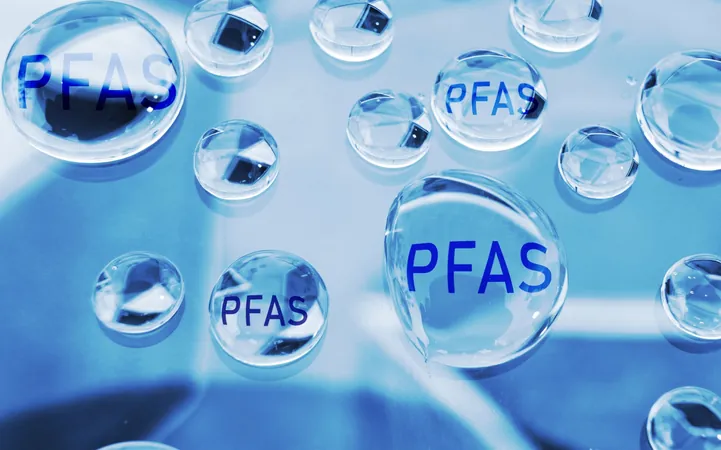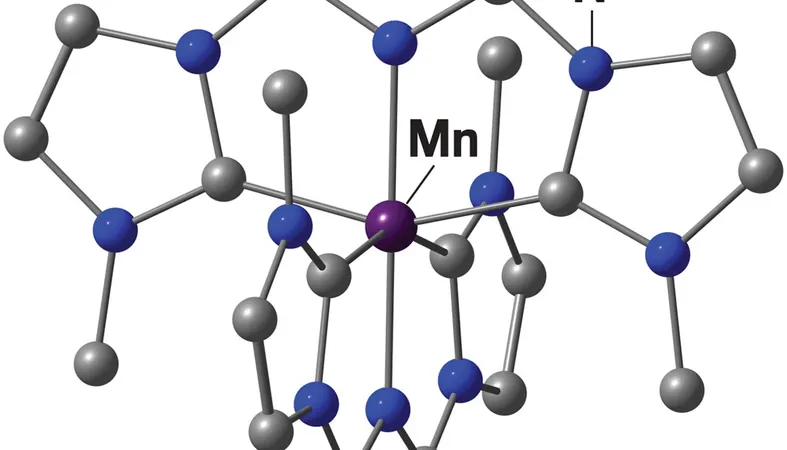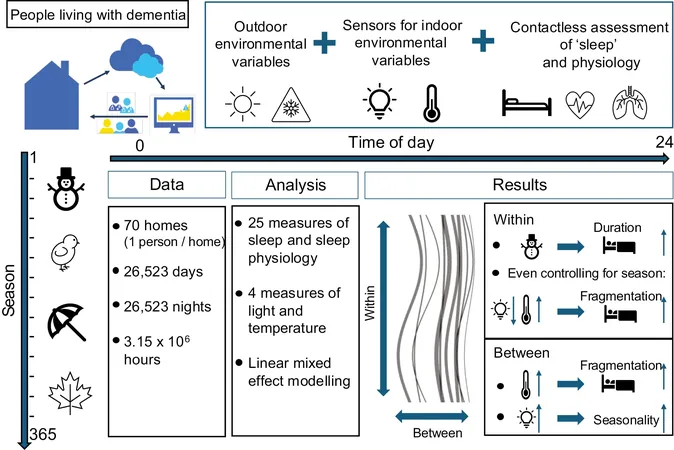
Revolutionary Discovery: Why 'Forever Chemicals' Are More Dangerous Than Ever
2025-09-11
Author: Wei
A Shocking New Understanding of PFAS Acidity
In a groundbreaking study, scientists have unveiled startling new insights into the acidity of PFAS, commonly known as 'forever chemicals.' It turns out these substances are not just bad for the environment—they're more acidic than previously believed, which explains why they spread so extensively through water.
What Makes Acidity So Important?
Acidity plays a crucial role in determining whether a molecule retains a proton, which affects its charge. Charged molecules dissolve more easily in water, allowing them to travel faster and farther in the environment.
Redefining Acidity with Precise Measurements
Dr. Alexander Hoepker and his team at the University at Buffalo conducted meticulous tests to measure the acidity of PFAS, sidestepping common pitfalls that often skew results. They identified new pKa values for 10 different PFAS compounds and found that their acidity was significantly underestimated in prior studies.
The Eye-Opening Findings
For instance, perfluorooctanoic acid (PFOA) was previously thought to have a pKa between 0.24 and 3.8, but this new study revealed a staggering pKa of about -0.27, indicating it remains ionized in nearly all natural waters. Similarly, GenX and trifluoroacetic acid (TFA) demonstrated acidity levels that were a thousand times lower than previous estimates, changing the way we understand these chemicals' environmental impact.
Overcoming Measurement Challenges
One challenge researchers faced was the tendency of PFAS to adhere to glass, consequently skewing bulk measurements. Utilizing advanced nuclear magnetic resonance (NMR) techniques, Hoepker’s team effectively captured the true charge states without interference from other factors. This innovative approach has led to much more reliable acidity readings.
The Implications for Remediation
Understanding the true acidity of PFAS is crucial for predicting how these chemicals behave in the environment. As stricter regulations emerge, including the listing of PFOA and PFOS as hazardous substances under federal law, this knowledge equips researchers and policymakers to create effective remediation strategies.
Why Tracking PFAS Is More Important Than Ever
PFAS contamination is not just confined to industrial areas; these chemicals are increasingly found in drinking water and rain around the globe. The new pKa values explain why TFA, for example, is so challenging to remove, as it remains soluble in water and travels easily.
What’s Next?
This fresh understanding of PFAS acidity offers a pathway to improve analytical methods, cleanup strategies, and better risk assessments, allowing for more effective resource allocation. The findings emphasize the need for ongoing vigilance in tracking and managing PFAS pollution.
Critical Takeaways From the Research
When acidity is measured accurately, the story of PFAS behavior becomes clearer, leading to improved laboratory practices, robust predictive models, and actionable cleanup plans. Ultimately, this newfound clarity helps focus community efforts on environmental remediation more effectively.
This pivotal study has been published in Environmental Science & Technology Letters, promising to steer future research and remediation efforts in the right direction.



 Brasil (PT)
Brasil (PT)
 Canada (EN)
Canada (EN)
 Chile (ES)
Chile (ES)
 Česko (CS)
Česko (CS)
 대한민국 (KO)
대한민국 (KO)
 España (ES)
España (ES)
 France (FR)
France (FR)
 Hong Kong (EN)
Hong Kong (EN)
 Italia (IT)
Italia (IT)
 日本 (JA)
日本 (JA)
 Magyarország (HU)
Magyarország (HU)
 Norge (NO)
Norge (NO)
 Polska (PL)
Polska (PL)
 Schweiz (DE)
Schweiz (DE)
 Singapore (EN)
Singapore (EN)
 Sverige (SV)
Sverige (SV)
 Suomi (FI)
Suomi (FI)
 Türkiye (TR)
Türkiye (TR)
 الإمارات العربية المتحدة (AR)
الإمارات العربية المتحدة (AR)